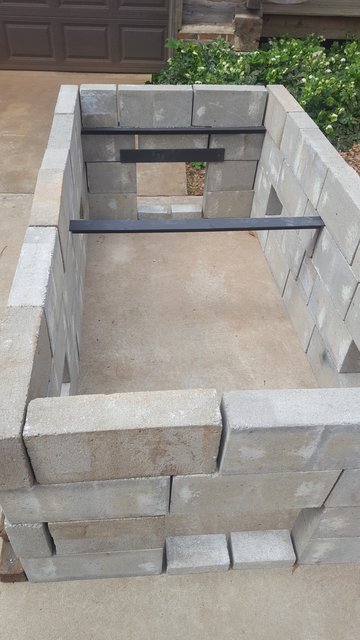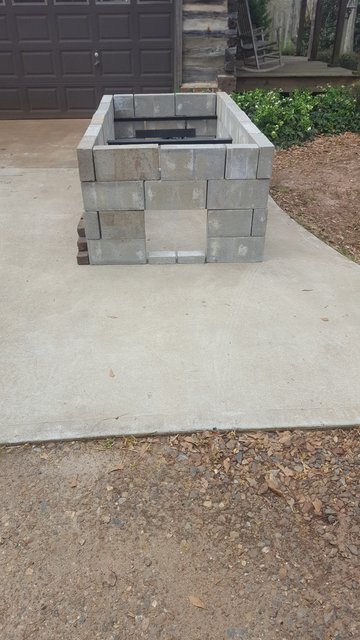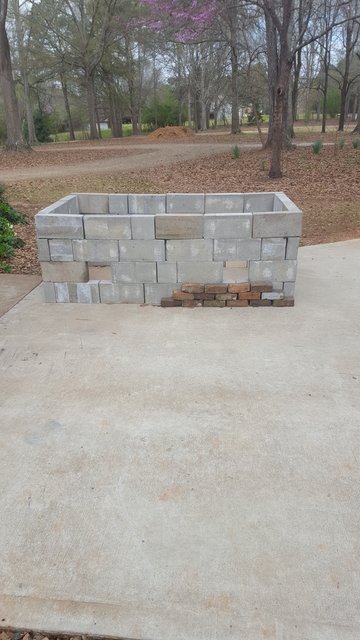eap0510
Full Fledged Farker
- Joined
- Sep 3, 2010
- Location
- Monroe, Ga
I have a good friend of mine that is building a cinder block pit so that one day we can cook a whole hog. The pit itself is being made out of cap blocks rather then actual hollow cinder block since cap blocks have a higher firer rating. That part of the build is going nicely but we are not certain about our fire barrel build.
Here are some shots of the barrel
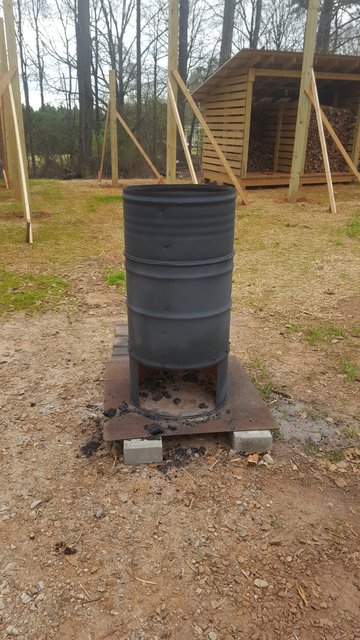
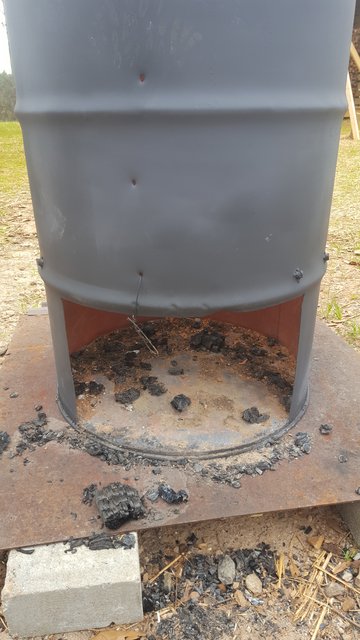
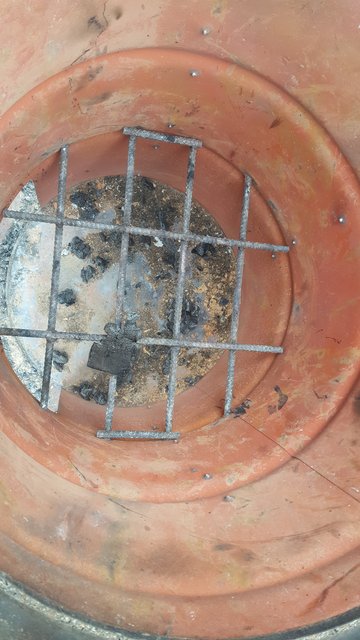
We did a test burn last night in it using pine and noticed that we just were not getting that many coals falling down. We began to shake and stir the fire which did help the coals to fall and after about an hour we had maybe 3 - 4 shovel loads. To us this did not seem like very much since we loaded the barrel all the way up and were steadily feeding it. We had some serious heat coming off of it but when we looked up from the bottom it seemed to not really be burning that much. Most of the fire from what we could tell was as the top and not at the bottom. It was at this point that we began to stir and shake the fire to get the coals to fall down.
Our question for those that have seen or had experience cooking this way is what does your barrel look like and how are you getting the coals to the bottom? At what rate were you feeding the barrel to continue to have a nice stream of coals to move over to the pit? How much wood did you end up using to complete the cook? We are thinking at the rate we saw coals being made from the pine wood we would need a good face cord. We are hoping that once we burn hardwood that we will get better coal production. Any assistance or suggestions would be greatly appreciated.
Here are some shots of the barrel



We did a test burn last night in it using pine and noticed that we just were not getting that many coals falling down. We began to shake and stir the fire which did help the coals to fall and after about an hour we had maybe 3 - 4 shovel loads. To us this did not seem like very much since we loaded the barrel all the way up and were steadily feeding it. We had some serious heat coming off of it but when we looked up from the bottom it seemed to not really be burning that much. Most of the fire from what we could tell was as the top and not at the bottom. It was at this point that we began to stir and shake the fire to get the coals to fall down.
Our question for those that have seen or had experience cooking this way is what does your barrel look like and how are you getting the coals to the bottom? At what rate were you feeding the barrel to continue to have a nice stream of coals to move over to the pit? How much wood did you end up using to complete the cook? We are thinking at the rate we saw coals being made from the pine wood we would need a good face cord. We are hoping that once we burn hardwood that we will get better coal production. Any assistance or suggestions would be greatly appreciated.

